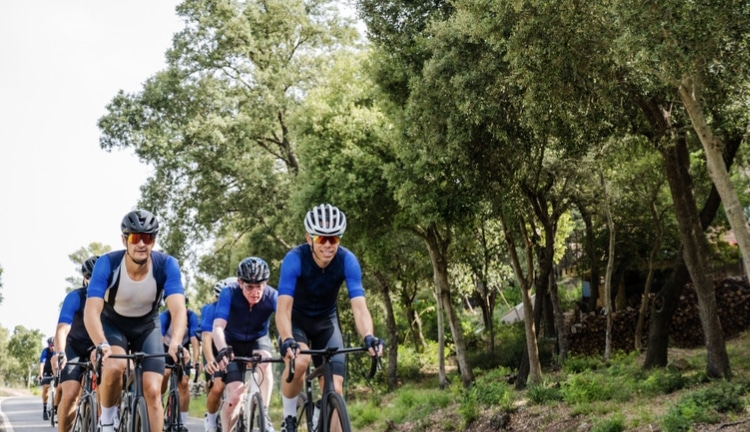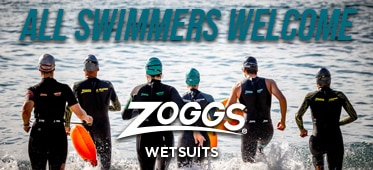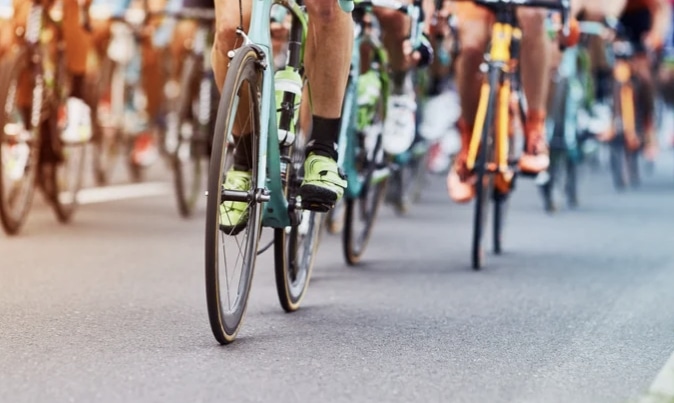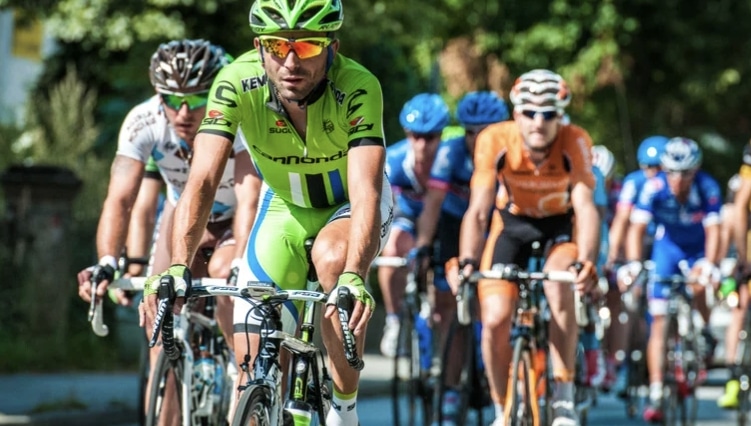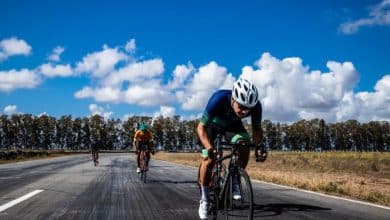How to ride better in a peloton? Essential Tips for cyclists and triathletes
Cycling is an essential component of the triathlon that demands not only excellent physical condition but also specific technical skills, especially when it comes to riding in a peloton.
This strategy, common in competitions, requires a knowledge of group dynamicss, aerodynamics and efficient energy management.
Below we offer a series of Essential tips for triathletes and cyclists with the help of Bkool who seek to improve their performance in this facet of the sport.
Understanding Platoon Dynamics
Riding in a peloton is not only a matter of energy savings; It is an art that involves understanding the physics of movement.
Wind resistance is significantly reduced at the core of the group, allowing cyclists to save up to 40% energy compared to riding alone.
The key is in stay close enough to take advantage of this benefit, but without compromising security.
Maintain the Correct Distance
One of the first lessons when riding in a peloton is learn to keep proper distance with the cyclists who precede us.
Too close can be dangerous because of sudden brakings; too far, and the aerodynamic effect is lost.
The ideal distance allows you to react in time to unforeseen events, while taking advantage of the reduction in wind resistance.
Rotations and Relays
Understanding when and how to perform relays is essential to maintain the rhythm and energy of the group.
Relays allow riders at the front of the pack, who face the most wind resistance, to rest by rotating backwards.
A smooth rotation keeps effort distributed equally among all members.
Maintain a Constant Rhythm
Fluctuations in pace can quickly wear down a platoon.
The cyclist in the lead must strive to maintain a constant effort, especially on climbs, where the temptation to accelerate can fragment the group.
A uniform rhythm allows all members of the platoon to contribute effectively and stay together.
Strategic positioning
Placement within the peloton may vary depending on the phase of the race and individual or team strategies.
Position on the sides can offer more movement options, while being in the center reduces effort, but limits quick exits.
It is vital to develop the ability to read the race and position yourself in a way that maximizes aerodynamic benefits without getting caught in unfavorable positions.
Comunicacion Efectiva
Clear and effective communication is vital in the peloton. Manual and verbal signals help indicate obstacles, changes of pace or turns to lead the group.
Understanding and proper use of these signs fosters an environment of cooperation and safety among cyclists.
Energy management
Managing energy efficiently is essential.
Teamwork allows you to alternate who leads the group, offering others the opportunity to rest in the aerodynamic suction.
Identifying the optimal moment to take control or stay sheltered is a skill that is perfected with experience and knowledge of one's own energy limit.
Braking and Acceleration Techniques
Mastery of the bicycle is crucial. Sudden braking or sudden acceleration can cause accidents. or unwanted separations in the group.
La anticipation and gentle use of brakes and gear shift They contribute to the fluidity of collective movement and minimize the risk of incidents.
Getting better in the platoon requires practice, patience and a good dose of tactical intelligence.
Triathletes and cyclists must work not only on their physical fitness but also on their communication, positioning and energy management skills.
By mastering these aspects, you can achieve higher levels of performance, safety and enjoyment in competitive cycling.
There are no previous results.

